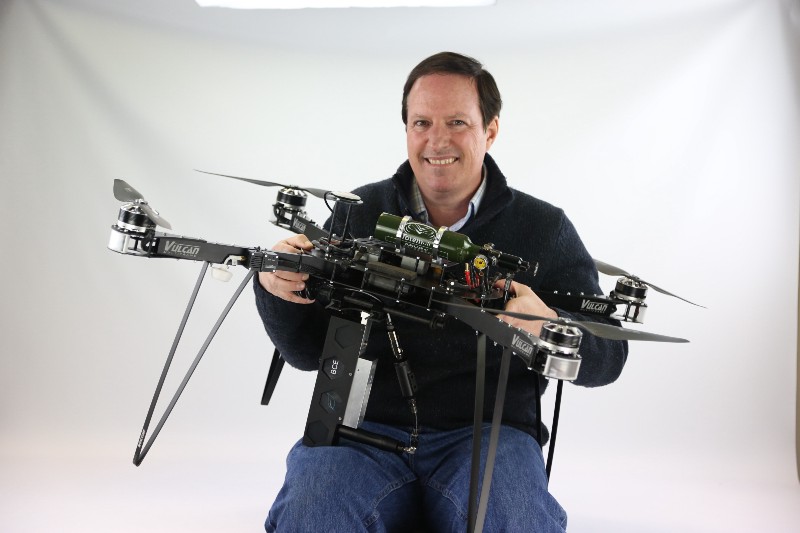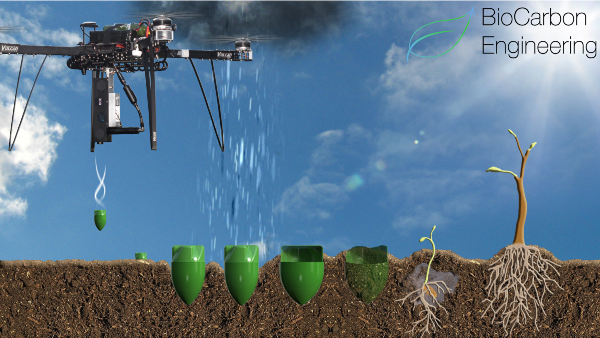

Over the weekend, 35,000 volunteers in Ecuador broke the Guinness World Record for mass tree-planting. As part of the Ecuadorian government’s revamped environment policy, volunteers planted 350,000 new trees in an effort to reforest the country’s degraded tropical ecosystems.
With global deforestation rates continuing to increase, reforestation is becoming more important than ever. Forests are essential both for the protection of global biodiversity, as well as in acting as an ally in combating global climate change. Yet, as the Ecuadorian experience shows, replanting at the necessary scale is a difficult and time-consuming task. Unfortunately, it’s not easy to break world records every day, or even every month.
But what if we could plant trees faster, and maybe even cheaper? That’s what a new company, BioCarbon Engineering, has set its eyes on. After featuring in a Drones for Good competition in the United Arab Emirates in February, it has boldly claimed it can plant one billion trees per year using drones.
At first glance BioCarbon Engineering’s technology seems pretty basic. Using modified quadcopters manufactured by Gloucestershire-based Vulcan UAV, the company plans to shoot pods containing germinated seeds and a nutrient gel into the ground; in theory, this will be more efficient and less expensive than humans could otherwise do by hand. Sounds simple, right? Not quite. Martin Tengler, BioCarbon Engineering cofounder, explained that the process is actually quite involved.
There are two preparation stages required before the seeds even come close to touching the ground. “Firstly we use satellite data to roughly work out the terrain that is to be reforested,” Tengler explained. “Then we speak with locals and see what kind of trees will grow under what conditions, and what other things we should add into the seed pod for an ecosystem to be restored.”
He continued, “The next stage is to take a mapping drone and to make a very precise planting pattern. That is to know to the precision of one to three centimeters as to where each exact seed pod is going to be put into the ground.”
This complex mapping is essential to ensure BioCarbon Engineering can meet its goal of restoring ecosystems rather than just planting monocultures. Once it’s done, bullet-shaped seed pods will be loaded into a drone that uses a similar mechanism to a paintball gun–air pressure–as a propellant. The pods will then either break up or dissolve on impact, releasing a germinated seed approximately five centimeters under the ground. Drones will then revisit the area weeks and months later to monitor the progress of the trees. If growth isn’t satisfactory, local residents will be deployed to investigate and figure out what went wrong and how it can be fixed.

It’s a complicated system, but if it works it could dramatically aid our ability to reforest areas destroyed by logging, desertification or a wide range of other damaging environmental pressures. It seems many already see that potential, as Tengler explained that BioCarbon Engineering is already working with companies, NGOs and landholders to eventually deploy its technology to sites around the world. They’re particularly focusing on Brazil and South Africa, two nations that have both a need for reforestation and the appropriate regulatory environment for the use of drone technology.
However, there is still a long way to go. Only a year old, BioCarbon Engineering currently only owns two drones: one for mapping and one for planting. The company recently undertook mapping tests in South Africa and is now looking for more funding to test its planting drones in target areas. Tengler confirmed, “We are at the theoretical stage”; the company is planning a Kickstarter campaign to fund the next steps.


How We Get To Next was a magazine that explored the future of science, technology, and culture from 2014 to 2019. This article is part of our Nature & Climate section, which looks at how human activity is changing the planet–for better or worse. Click the logo to read more.
